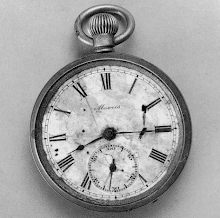During World War I, the U.S. Government established the American University Experiment Station (AUES) to investigate the testing, production, and effects of noxious gases, antidotes, and protective masks. The AUES, located on the current grounds of AU, used additional property in the vicinity to conduct this research and develop chemical warfare materiel (CWM), including mustard (HD) and lewisite (L) agents, as well as adamsite, irritants, and smokes. After the war, these activities were transferred to other locations and the AUES property was returned to the owners ...
Early in the SVFUDS groundwater study, much of the SVFUDS groundwater was noted to flow westward toward the natural valley currently occupied by the Dalecarlia Reservoir. The reservoir water elevation (typically about 150 feet mean sea level (ft msl) was also noted to be similar to the water table elevation along the eastern reservoir shoreline, indicating the potential for groundwater seepage into the reservoir along the eastern reservoir boundary ... The maximum arsenic and perchlorate concentrations ever measured in groundwater proximate to the eastern reservoir shoreline are orders of magnitude less than the threshold concentration (3,906 part per billion) that would increase the reservoir concentration by 1 ppb. Thus, the reservoir water quality is not threatened by possible groundwater seepage into the reservoir ...
Chemical releases from historical AUES activities have impacted groundwater and surface water proximate to the Lot 18 Debris Area and Glenbrook Road Disposal Areas. The impacts are due to arsenic and perchlorate in groundwater ... The perchlorate detected in groundwater along Glenbrook Road and in East Creek could partially, or in total, originate from the nearby upgradient area proximate to AU’s Kreeger Hall where perchlorate-impacted shallow and deep groundwater has been confirmed. The source of the groundwater perchlorate contamination on AU near Kreeger Hall, originally evidenced by groundwater perchlorate monitoring data for several locations (PZ-4S, PZ-4D, and PZ-5) is not known precisely ...
For the future scenarios, the arsenic cancer risk is 1E-04, and the perchlorate non-cancer target organ-specific HI [Hazard Index] exceeds the non-cancer threshold of 1. Arsenic and perchlorate are groundwater EU2 [Exposure Unit 2] chemicals of concern. Actions to control exposure to arsenic and perchlorate in groundwater EU2 would warrant consideration, if groundwater is to be used for potable water ... Chemical releases from historical AUES activities have impacted groundwater and surface water proximate to the Lot 18 Debris Area and Glenbrook Road Disposal Areas. The impacts are due to arsenic and perchlorate in groundwater ... A Feasibility Study is recommended to determine the best alternative to remediate the groundwater risk to future residential users.
Spring Valley FUDS
Groundwater Remedial Investigation Report
September 2016
Oct 7, 2016
Subscribe to:
Posts (Atom)





